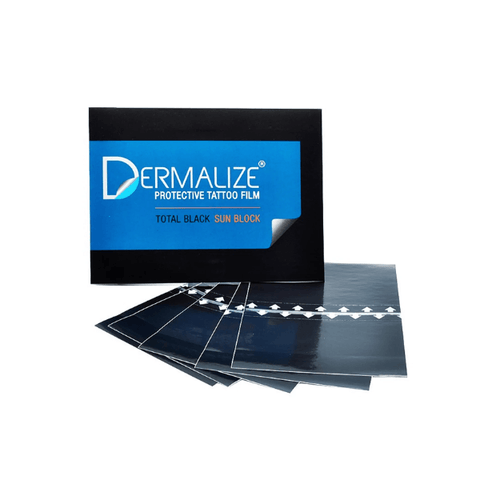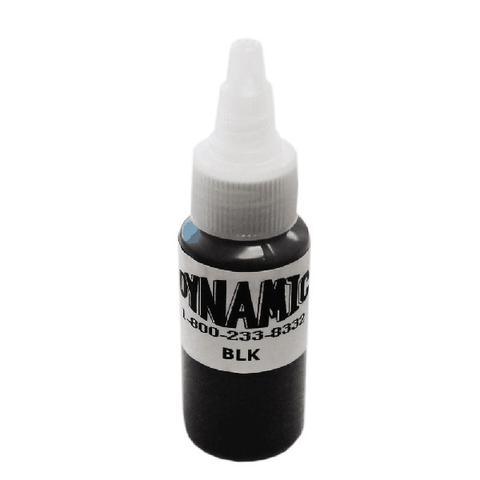Mastering second skin application techniques for enhanced tattoo healing

Applying a second skin to a new tattoo often leads to common problems like wrinkles, peeling, and incorrect coverage, which can affect how well your tattoo heals. If not done right, the dressing might not protect the tattoo properly, or it could trap too much moisture, leading to irritation or even infection.
So, we'll go through the process of applying second skin and give you clear, straightforward tips to get it right. Learning these simple techniques can help your tattoo heal better and look great, just as your tattoo artist intended.
What is second skin?

Second skin, in the context of tattoo aftercare, refers to a type of dressing or product applied to a freshly tattooed area to protect the wound and promote healing. These products create a thin, protective barrier over the tattoo, acting as a "second skin" that shields the area from external irritants, bacteria, and friction.
How does second skin differ from traditional aftercare methods?
Second skin aftercare differs from traditional methods in several ways:
- Protection: The second skin provides a physical barrier that completely covers the tattoo, protecting it from external irritants, bacteria, and friction. Traditional methods like ointments or lotions expose the tattoo to the environment more.
- Moisture retention: Second skin products create an occlusive layer that keeps the tattoo moist and hydrated, which is essential for proper healing. Traditional methods may require more frequent application of ointments or lotions to maintain adequate moisture levels.
- Scabbing and peeling: Second skin minimises scabbing and peeling by keeping the tattoo moist and preventing the formation of hard scabs. Traditional methods are more likely to result in scabbing and peeling, leading to longer healing times and potential damage to the tattoo.
- Convenience: Once applied, the second skin can be left on for several days, depending on the product and healing progress. This reduces the need for frequent cleaning and reapplication of products. Traditional methods often require multiple daily applications of aftercare products and tattoo cleaning.
- Healing time: Many tattoo artists and clients report faster healing times when using second skin than traditional methods. Second skin's protective barrier and moisture retention properties can promote more efficient healing.
- Tattoo appearance: Second skin can help minimise the risk of tattoo damage during the healing process, potentially resulting in better tattoo appearance and colour retention. Traditional methods may be more prone to issues like ink loss or uneven healing.
Types of second skin products
- Hydrogel dressings: These are thin, flexible sheets made of water-based gel or similar transparent material. They're excellent for keeping the tattoo moist and protected from external contaminants and allow the tattoo to breathe while healing. For an enhanced healing experience, we recommend using YAYO Guard Protective Film. This product is specifically designed to provide optimal moisture retention and breathability, making it a superior choice for tattoo aftercare
- Foam dressings: Made from soft, absorbent foam, these dressings protect the tattoo from mechanical damage and absorb excess fluid. They are thicker than hydrogel dressings and offer more cushioning against impacts.
- Silicone sheets: These are used primarily for scar management but can also be effective in tattoo healing. Silicone sheets help keep the area hydrated and reduce itching and discomfort during healing.
- Adhesive medical tapes: Some tattoo artists use breathable, gentle adhesive tapes as a form of second skin. These are usually hypoallergic and allow air to reach the tattoo while offering protection.
- Spray-on bandages: These are liquid bandages sprayed directly onto the tattoo. They form a thin film that protects the tattoo from dirt and germs while letting it breathe. For those seeking the best in tattoo aftercare, we highly recommend Tattoo Spray Plaster.
How to apply second skin for tattoos
1. Hydrogel dressings
- Ensure the tattoo and surrounding skin are clean and completely dry.
- Cut the hydrogel dressing to slightly larger than the tattooed area.
- Carefully remove the protective backing to expose the gel.
- Place the gel side down on the tattoo, smoothing out to avoid air bubbles.
- The dressing should stick by itself, but you can use a light wrap or bandage for extra security if needed.
2. Foam dressings
- Thoroughly clean and dry the tattoo.
- Measure and cut the foam dressing, ensuring it covers the tattoo and an additional margin around it.
- Place the foam dressing over the tattoo. It may have an adhesive border; if not, use medical tape to secure the edges.
- Ensure the dressing is secure and provides cushioning without pressing down too hard on the tattoo.
3. Silicone sheets
- Clean and completely dry the tattooed area.
- Measure and cut the silicone sheet to cover the tattoo and extend beyond its edges.
- Peel away the backing and apply the sheet directly over the tattoo, smoothing out any wrinkles or air pockets.
- Silicone sheets usually adhere on their own but can be held in place with medical tape if necessary.
4. Adhesive medical tapes
- Clean and dry the tattoo thoroughly.
- Cut the adhesive medical tape to cover the tattoo and an additional border around it. Apply carefully, smoothing out to ensure the tape sticks uniformly without tension that could cause irritation.
5. Spray-on bandages
- Make sure the tattoo area is immaculately clean and dry.
- Hold the spray a few inches away from the tattoo and apply a light, even coating.
- Allow the spray to dry completely, forming a protective film over the tattoo.
How to maintain and remove second skin
Maintaining second skin dressing
- Keep the second skin dressing on your tattoo between 24 hours and a few days or the recommended duration by your tattoo artist.
- Avoid exposing the tattooed skin to direct sunlight, excessive moisture, or dirt while the dressing is on. The second skin creates a barrier that protects the tattoo but can be compromised if not cared for properly.
- Try to keep the area dry. Showers are fine, but no baths, swimming, or soaking, as these can loosen the adhesive and allow bacteria to enter.
- Inspect the edges of the second skin regularly. If you notice any peeling or lifting, it may be time to replace or remove the dressing.
- If the dressing causes discomfort, irritation, or excessive swelling, consult your tattoo artist. Some redness is normal, but excessive symptoms may need attention.
Removing the second skin dressing
- Start by washing your both hands to prevent introducing bacteria to the healing tattoo.
- Find an edge of the dressing and slowly peel it back over itself, not away from the skin. Pulling the dressing up can damage the skin and the tattoo. If the dressing is adherent, a bit of warm water might help in easing it off.
- Once removed, gently wash the tattoo with mild, fragrance-free soap and lukewarm water. Dab the area dry using a fresh paper towel.
- Follow this by applying a light layer of a fragrance-free moisturiser. This keeps the tattoo hydrated and promotes healing.
- After removing the second skin, watch how the tattoo heals. It should start to scab over and heal. If you notice any signs of infection, such as excessive redness, swelling, or pus, consult a healthcare professional.
When to take the second skin off the tattoo?
Here are a few guidelines to help determine the best time to remove it:
- Always start by following the duration recommended by your tattoo artist, as they understand how the tattoo and your skin type interact with the second skin product.
- If the second skin starts to peel off, collect fluid, or trap excessive moisture underneath, it's advisable to remove it earlier than planned to prevent any potential issues like infection or irritation.
- Remove the dressing sooner if you experience any discomfort, excessive swelling, or signs of an allergic reaction under the dressing.
- If the dressing is still intact and not causing any issues, you can keep it on for a longer duration within the recommended time frame to protect the tattoo as it starts the healing process.
Potential issues and solutions when applying second skin
When applying a second skin dressing, typically used in the tattoo healing process, there are several issues that may arise, along with solutions to address them:
Allergic reactions:
Some individuals may experience allergic reactions to the adhesive used in second skin products. Symptoms can include redness, itching, and swelling at the application site.
To mitigate this, we advise testing the product on a small skin area before applying it over a tattoo. If a skin allergic reaction occurs, the product should be removed immediately, and an alternative hypoallergic option should be considered.
Improper healing
If the second skin is applied too tightly, or if it's left on for too long, it can create a moist environment that might interfere with the tattoo's healing process. This moisture can potentially lead to infections or cause the tattoo's ink to spread, blurring the design.
The solution is to follow the product's instructions carefully regarding how long the dressing should stay on, usually between one to several days, and to ensure that it's not too tightly applied.
Difficult application
Applying a second skin product can be tricky, especially over large or contoured areas. Wrinkles and air bubbles can form, which may lead to uneven healing.
To address this, it's best to apply the product slowly and carefully, smoothing it out to eliminate air bubbles and folds. Assistance from another person might be helpful for tattoos in hard-to-reach areas.
Water trapping
While second skin products are waterproof, water can sometimes get trapped underneath during bathing or showering, compromising the healing process.
To prevent this, it's crucial to seal the edges of the dressing completely around the tattoo. Checking the dressing after exposure to water and patting the area dry can help maintain the integrity of the adhesive and prevent water from seeping in.
Early peeling or rolling
The edges of the dressing may start to peel or roll up, which exposes the new tattoo to the environment, increasing the risk of contamination and infection.
To solve this, one might need to trim any lifted edges and potentially apply a small additional piece of second skin to cover the exposed area fully, ensuring it overlaps with the existing dressing.
Final thoughts
By understanding and addressing common application issues, you can ensure that your tattoo is protected, allowing it to heal efficiently and effectively. Proper application helps prevent infections, reduces irritation, and maintains the vibrancy of your tattoo.
As you shop for tattoo care services, consider making your first order of second skin from a reputable provider. This simple step at checkout can enhance the life of your tattoo and ensure it remains vibrant.
Remember, the way to a beautifully healed tattoo lies not only in the artwork and skill of the tattoo artist but also in how you care for it afterwards. With the right techniques for applying second skin, you are setting the stage for your new tattoo to look its best for years to come.
- Tags: business tips second skin
- Mark Joshua Luz











